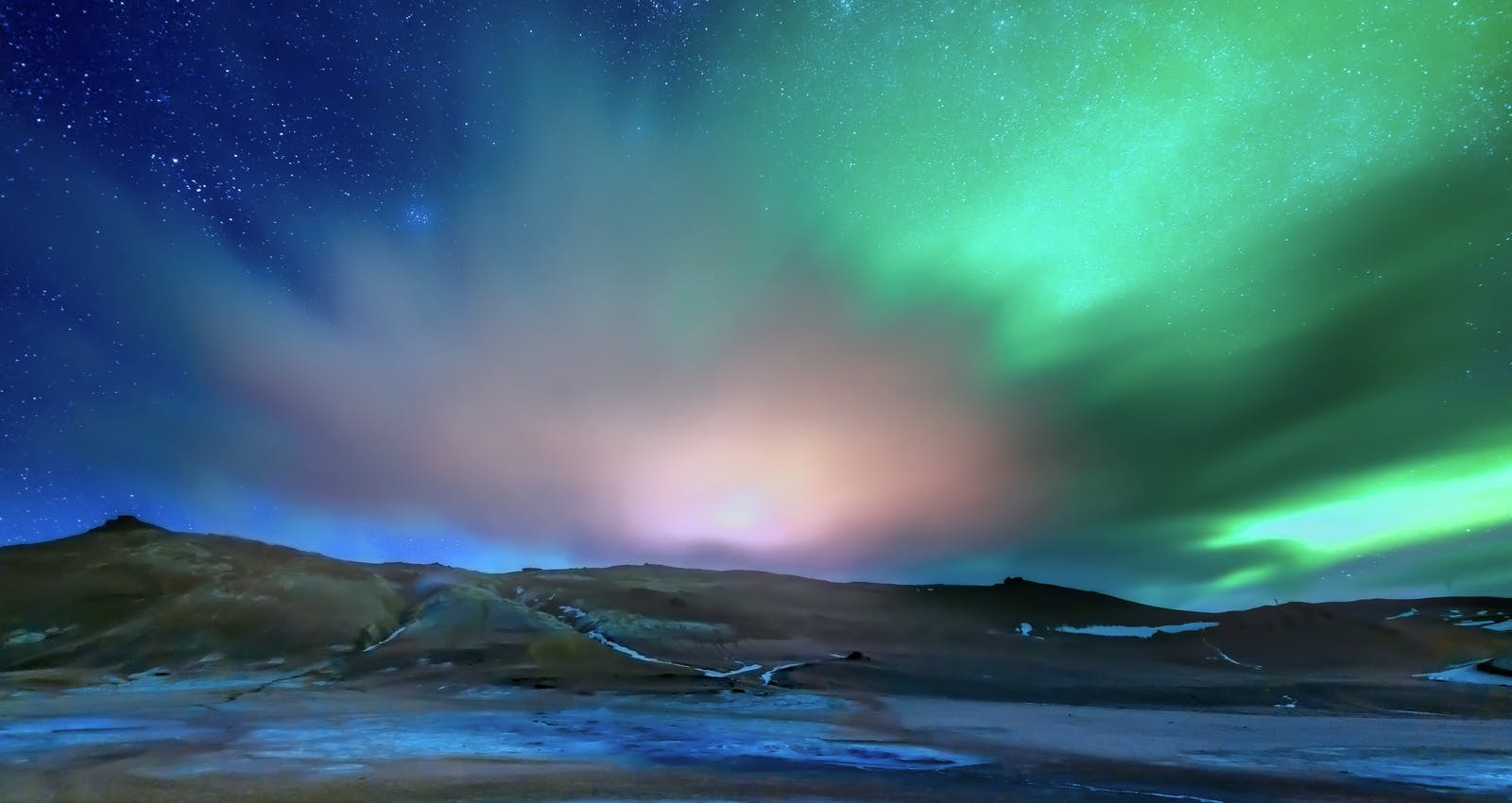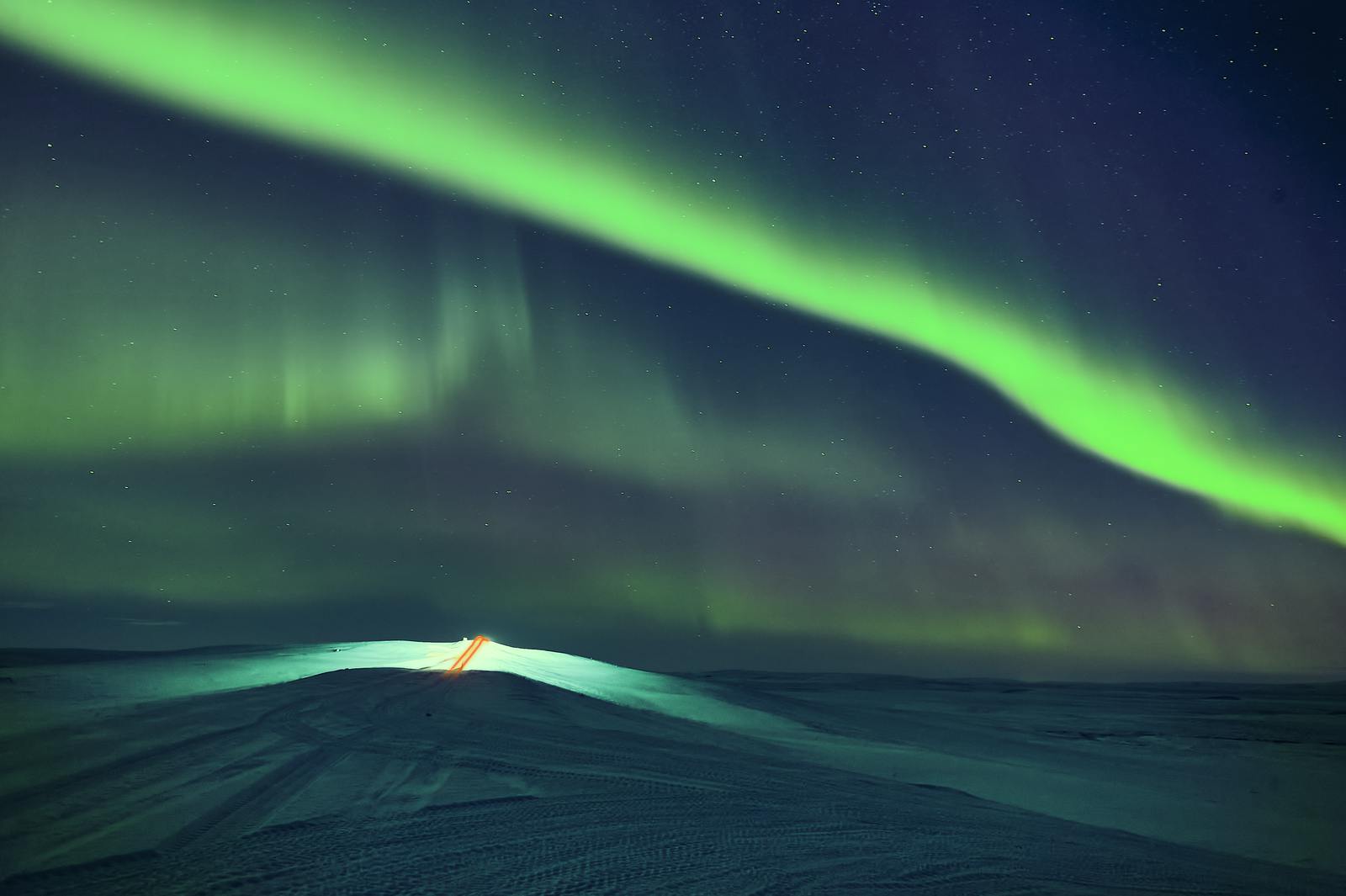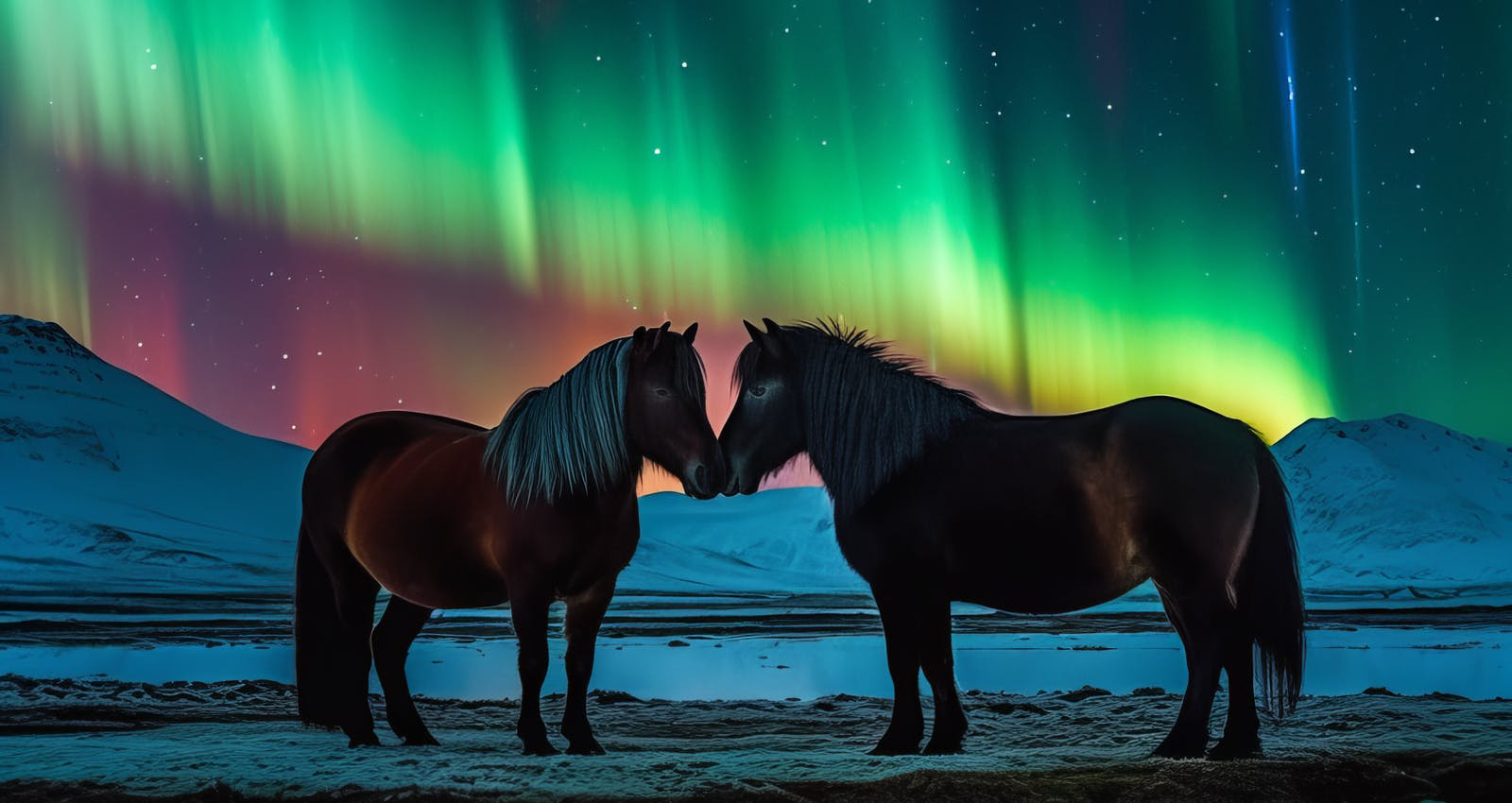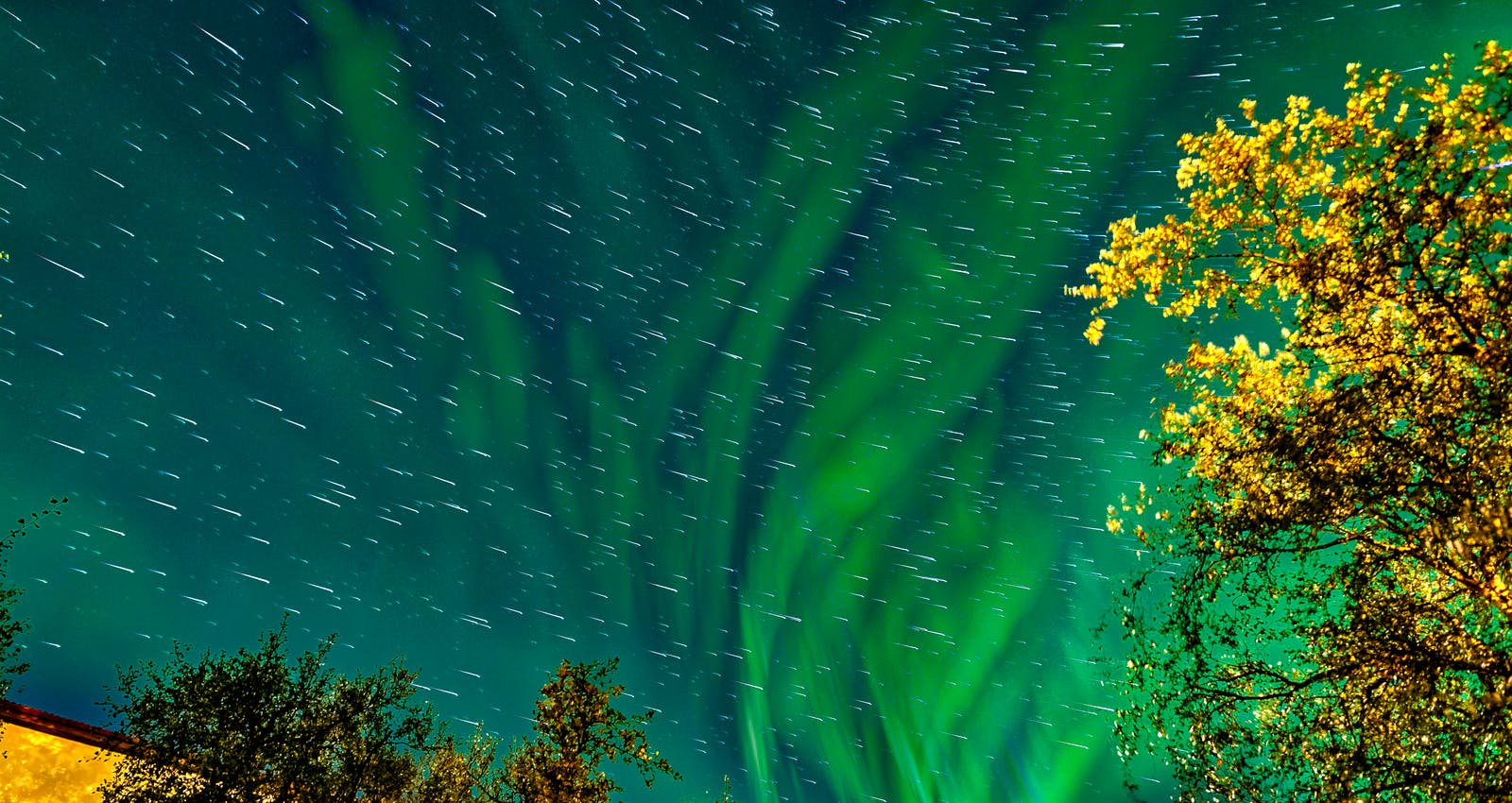
What Causes the Northern Lights?
The Northern Lights, often referred to as the Aurora Borealis, paint the night sky with mesmerizing colours and patterns. For many, witnessing this natural spectacle is a once-in-a-lifetime experience akin to nature's very own light show. But what exactly causes these lights to dance and shimmer in the sky?
If you're planning a trip to chase this phenomenon, Reykjavik's Perlan is a must-visit. Inside Perlan, there's a planetarium that hosts the Áróra show. This isn't just any ordinary presentation about the Northern Lights. Instead, it weaves a captivating narrative where the goddess of dawn takes you through the tale of the auroras. The show is a harmonious blend of science and art, offering viewers a comprehensive understanding of the phenomenon while immersing them in its beauty.
What Are the Northern Lights?

The Northern Lights, or Aurora Borealis, are a captivating light display seen mainly in high-latitude regions near the Arctic and Antarctic. Originating from the sun's constant nuclear reactions, charged particles, like electrons and protons, are released into space.
When these particles reach Earth, they're drawn by our planet's magnetic field and collide with atmospheric gases, such as oxygen and nitrogen. These collisions produce the vibrant colours of the auroras, with each colour representing a specific gas and altitude of interaction.
In essence, the Northern Lights are a beautiful manifestation of the intricate dance between the sun and Earth's atmosphere.
Where and Why Do We See the Northern Lights?
The Northern Lights are most commonly visible in a belt that includes parts of Alaska, Canada, northern Russia, Greenland's southern region, Iceland, Sweden, Finland, and the far north of Norway. Some lucky observers might also catch them in places like the Orkneys and the Faroe Islands.
But why these specific locations?
It's all about Earth's magnetic field. The dazzling lights are a result of charged particles from the sun, known as solar winds. When there are significant solar explosions, these particles are hurled into space. Upon reaching Earth's atmosphere, they break apart. As they rejoin to form molecules, they release light.
The intensity of this light is directly related to the sun's activity: the more intense the solar storm, the brighter the auroras. So, if you're planning to witness this spectacle, it's a good idea to keep an eye on the aurora forecast.
Why Do You See Different Colours?

The Northern Lights aren't just one colour. They can be green, red, magenta, blue, or even purple. The variety in colour is due to the different gases present in Earth's atmosphere. When charged particles collide with these gases, they emit light in various colours. For instance:
- Green: This is the most common colour and is a result of collisions with oxygen molecules.
- Red or Magenta: These colours hint at the presence of nitrogen.
- Blue or Purple: These are less common and suggest interactions with hydrogen or helium. They're also harder to spot against the night sky.
Why Do You Need Clear Skies To See Them?

The Northern Lights take place at high altitudes, way above the clouds. If it's cloudy, you won't be able to see the lights, no matter how active they are. So, a clear sky is your best friend when aurora hunting.
And while you might associate Iceland with cold and snow, remember that during its summer months, the extended daylight makes it impossible to see the Aurora Borealis. The prime viewing season is between September and March, with peak activity around the spring and autumn equinox, usually between 10 pm and midnight.
Why Are the Northern Lights Rare Near the Equator?
The Northern Lights are more prevalent near the poles. In the southern hemisphere, they're called the Aurora Australis. The reason they're rare near the equator is that there needs to be a significant number of particles colliding with the atmosphere to produce visible auroras. The further you move from the poles, the stronger the auroral activity needs to be.
However, during intense solar storms, like the one in 1859, the Northern Lights were visible as far south as Hawaii! But such occurrences are exceptions. So, if you're eager to see this natural wonder, heading to places like Iceland might be your best bet. Otherwise, you might be waiting a long time to see them in your backyard!
Popular articles

Reykjanes Volcanoes Overview
Enjoy a complete overview of the Reykjanes Volcanoes from 2021-2024. Learn about its geology, recent activity, and visitor tips for a safe, memorable experience.

Reykjanes Peninsula Volcanoes: Sundhnúksgígar Eruptions
The anticipated volcano has erupted in the Reykjanes Peninsula, the site is being called Sundhnúkagígar. See the historic insights on the seismic activity and volcanic eruptions.

Earthquakes in Iceland
Earthquakes in Iceland are a fact of life. Each year, hundreds of small tremors shake the earth, a reminder of the country’s position on a tectonic plate boundary.

Volcano Museums and Exhibitions in Iceland
If you don't manage to visit an actively erupting volcano in Iceland - Experience its force at one of these excellent volcano museums and exhibitions in Iceland.

Top 10 Places To See the Northern Lights in Iceland
You can see the northern lights across the country, but some spots are more suitable than others. Find the best place to see the northern lights in Iceland.

Ice Caves From Reykjavik
Travel beyond the capital for a closer look at an ice cave under one of Iceland’s glaciers. If you can’t spare the time, experience Perlan’s ice cave in Reykjavik.